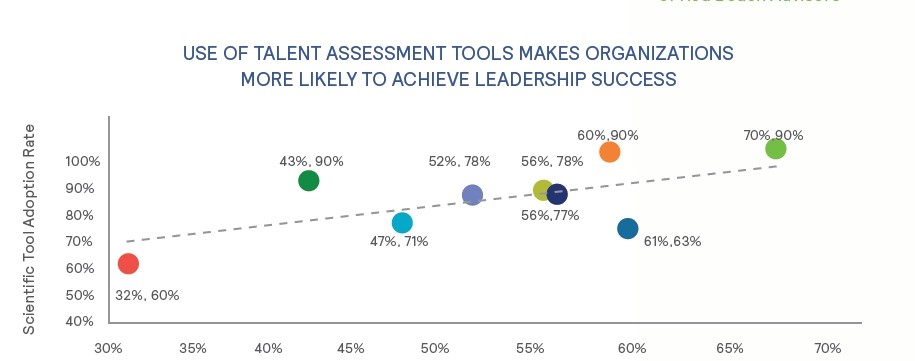Leadership Crisis: What Can We Do About It (Study)
56% of executives consider that the organisations they work for are not prepared to satisfy the needs of their most talented employees in regards to their leadership skills a Deloitte study has stated. Why does this happen? Where exactly is the problem and last, but not least, what can we do to fix this issue?
A recent Mercer study (2019), with a respondent base of over 500 people, has discovered some troubling new trends in terms of organizational leadership and trying to answer the aforementioned questions. Before getting into more details, here are a few key details from this respective study:
- 27% of potential candidates are lost along the way due to a lack of a coherent selection methodology
- 42% of organisations do not have a structured leadership competence system
- 23% of organisations use the interview as the sole recruitment tool
- In 63% of cases, traditional interviews fail in evaluating a candidate’s soft skills
- In the case of succession plans, the rate of success in occupying managerial positions is 70-80% in comparison to 50-55% for those managers who are brought in outside the company for the same job position
- 33% of organisations believe they are using the appropriate methods of measuring the quality of their hirings and only 5% believe that their methods are optimal
- 23% of potential talents are rejected from the hiring or promotion process due to the company’s inability to identify the real performance indicators
- 16% of organisations do not know what types of talents they need to hire for their leadership positions
- 42% of organisations are not aware of the necessary competencies their own leaders require
A remarkable correlation has been uncovered by Mercer is that the success of leadership in organisations is directly proportional to the adoption of assessment tools.

What organisational practices does Mercer recommend in order for companies to develop their success in terms of leadership:
- Develop a proper and well-structured competencies system, giving organisations the help they need in discovering the types of people they need in the organization and what types of talents they should hire in the future
- Use assessment tools in order to properly measure the ability level of talents with the purpose of making decisions based on real facts, thus increasing the company’s chances of recruiting the right people
- Prepare a proper internal succession plan with the help of which organisations can develop their own talents and prepare them for leadership roles
- Incorporate leadership in hiring decisions in order to assure that the firm’s leaders share the same values, vision and the company’s mission statement
- Develop your hiring process to be more effortless and short. Real talents won’t wait for too long!
How can Great People Inside help you?
First of all, we are aware that the first step into improving the workforce is that of identifying the key aspects that differentiate your organisation from all the rest. Once you have accomplished this first step, you will know what are your key performance indicators, what to identify when assessing candidates and employees by developing a well-structured competence system.
Secondly, our platform is extremely simple to customise in order for it to meet the clients’ needs. We offer you the possibility of either choosing one of the available models we have in place or you can request the appropriate dimensions to match your specific needs, thus making your whole recruitment process a lot easier.
Two of the solutions Great People Inside has to offer, GR8 Full Spectrum and GR8 Managers, are optimal instruments which are validated scientifically in order to ensure leadership success within your organisation:
GR8 Full Spectrum – The ultimate tool for measuring employee performance, GR8 Full Spectrum assesses everything from behavioural characteristics to cognitive ability and occupational interests. With this instrument, you’ll be able to get a full overview of an employee’s potential, along with his or her match on a per-organisation and per-position level. The assessment also offers suggestions for future development, as well as the opportunity to create your own content.
GR8 Managers – As people entrusted with a high level of responsibility, it stands to reason that managers will greatly benefit from a thorough assessment of their personality and skills. Inspired by Jim Kouzes and Barry Posner’s work the GR8 Managers tool focuses on identifying management potential from several different perspectives. These include the three main managerial qualities of fairness, foresight and inspiration, as well as the ability to work with generation diversity and in a VUCA (volatile, uncertain, complex, and ambiguous) environment.
Source: Leadership Hiring Trends Report 2019 – Mercer




